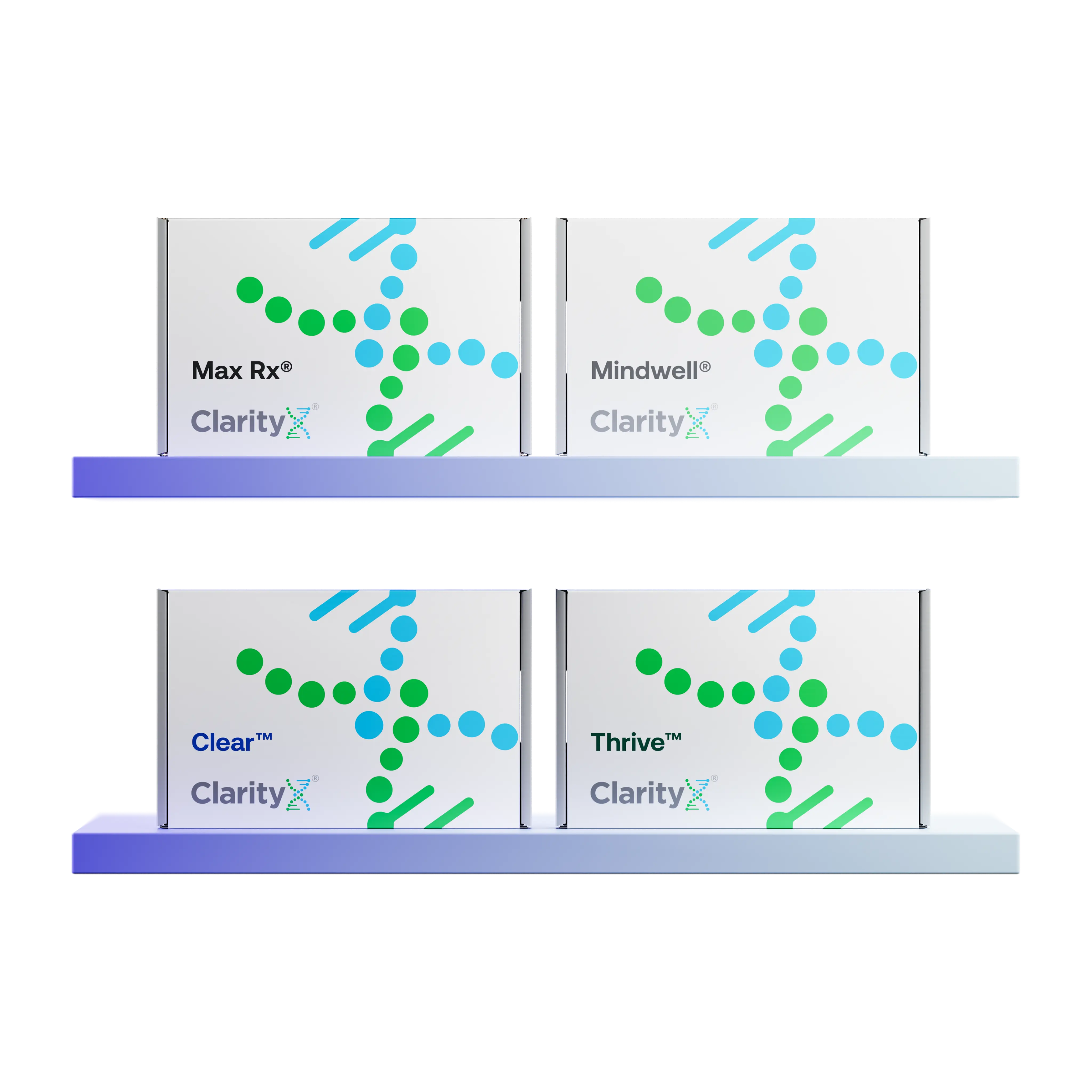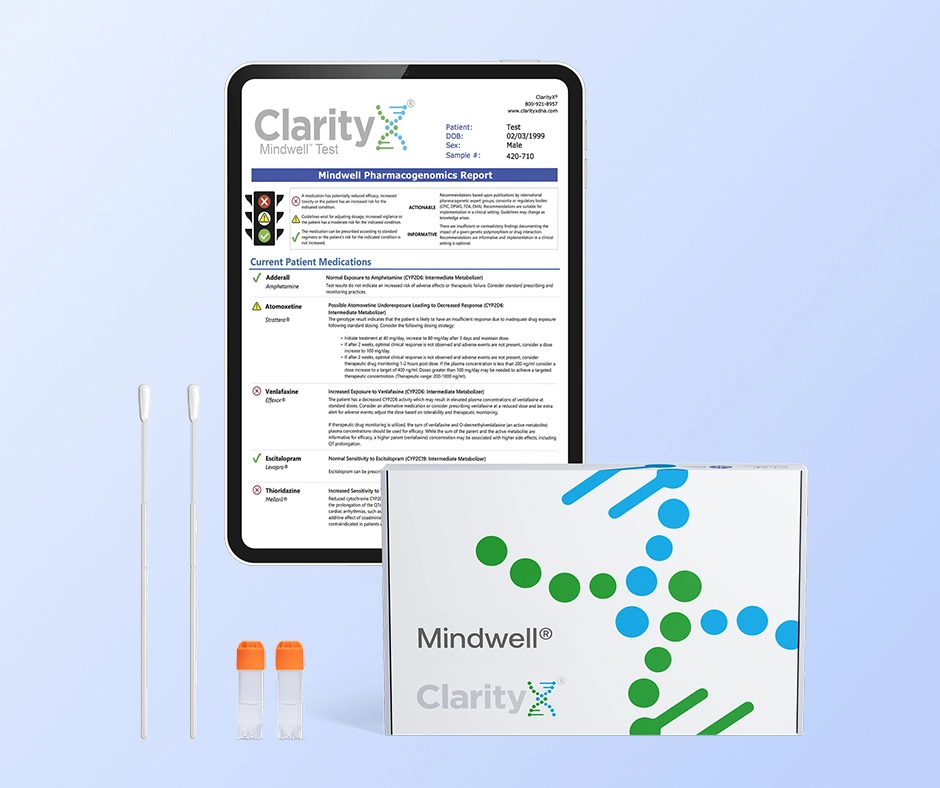Key Highlights
Valium® and Xanax® are both benzodiazepine medications that work by enhancing the effects of a neurotransmitter called GABA in the brain.
- Both medications are effective in reducing anxiety symptoms, although Xanax may be slightly more effective.
- Valium is also often prescribed for muscle spasms, alcohol withdrawal, and seizure disorders, while Xanax is often used more specifically to manage anxiety and panic disorders.
- Both Valium and Xanax have boxed warnings from the FDA regarding the risks of abuse, misuse, and addiction.
- Long-term use of these medications is typically avoided due to the potential for dependence, with Xanax posing a higher risk.
- It is important to work closely with a healthcare provider to determine the most suitable treatment plan and to avoid potential drug interactions.
Introduction
Valium (diazepam) and Xanax (alprazolam) are two commonly prescribed medications that belong to the benzodiazepine drug class. These medications are often used for the treatment of anxiety disorders and can be effective in reducing anxiety symptoms. While both Valium and Xanax work by enhancing the effects of a neurotransmitter called gamma-aminobutyric acid (GABA) in the brain, there are some differences between the two drugs.
In this blog, we will provide a comprehensive comparison of Valium and Xanax, exploring their origins, medical uses, how they affect the brain, their similarities and differences, recommended dosages, side effects, risks of addiction and withdrawal, patient experiences, and frequently asked questions. By understanding the similarities and differences between Valium and Xanax, individuals can make informed decisions about their anxiety treatment options.
Understanding Valium and Xanax
Valium and Xanax are both prescription medications that belong to the benzodiazepine drug class. These medications work by enhancing the effects of GABA, an inhibitory neurotransmitter made in the brain. GABA helps regulate nerve cell activity in the central nervous system, reducing anxiety and promoting relaxation.
Valium is commonly prescribed for the treatment of muscle spasms, alcohol withdrawal, and seizure disorders. It can also be used to relieve the symptoms of anxiety disorders. Xanax, on the other hand, is primarily used to manage anxiety and panic disorders. It can also be prescribed for the short-term relief of anxiety symptoms.
Both Valium and Xanax are effective in reducing symptoms of anxiety, although clinical trials have shown that Xanax may be as effective as, or sometimes more effective than, Valium. It is important to note that the effectiveness of these medications can vary depending on individual factors and the specific anxiety symptoms being treated.
Origins and Medical Uses
Valium, known by its generic name diazepam, was first introduced in 1963 and is marketed under various brand names. It is one of the most prescribed medications in the United States and is commonly used for its calming effect on the central nervous system. Healthcare providers often prescribe Valium for the treatment of muscle spasms, alcohol withdrawal, and seizure disorders. It can also be used to relieve the symptoms of anxiety disorders.
Xanax, or alprazolam, was first introduced in 1981 and has gained popularity as a treatment for anxiety disorders. It is also one of the most prescribed medications in the United States. Healthcare providers may prescribe Xanax for the short-term relief of anxiety symptoms and the management of panic disorders.
Both Valium and Xanax are prescription drugs that should only be taken under the guidance of a healthcare provider. Following the prescribed dosage and discussing any concerns or questions with a healthcare provider is important.
How They Affect the Brain
Valium and Xanax work by enhancing the effects of GABA, an inhibitory neurotransmitter in the brain. GABA helps regulate nerve cell activity in the central nervous system, reducing anxiety and promoting relaxation.
When Valium or Xanax is taken, they bind to receptors in the brain that are sensitive to GABA. This binding increases the inhibitory effects of GABA, leading to a reduction in anxiety symptoms. By enhancing the effects of GABA, Valium and Xanax help to calm the central nervous system and promote a sense of relaxation.
The effects of Valium and Xanax can vary depending on the individual and the specific dosage taken. It is important to note that these medications can have sedative effects and may cause drowsiness. It is recommended to avoid driving or operating heavy machinery while taking Valium or Xanax until the individual understands how the medication affects them.
Analyzing the Similarities
Valium and Xanax have several similarities when it comes to their use in the treatment of anxiety. Both medications are effective in reducing anxiety symptoms and work by enhancing the effects of GABA in the brain. They both belong to the benzodiazepine drug class and have a similar mechanism of action. However, there are some differences between the two drugs that should be taken into consideration when choosing an appropriate medication for anxiety treatment.
Anxiety Treatment Capabilities
Both Valium and Xanax are commonly used in the treatment of anxiety disorders. They can help to reduce symptoms such as excessive worry, restlessness, irritability, difficulty concentrating, and sleep disturbances. These medications can provide short-term relief for individuals experiencing acute anxiety symptoms or during times of increased stress. Some studies suggest Xanax may be slightly more effective for anxiety management.
It is important to note that Valium and Xanax are not intended as long-term solutions for anxiety. They are typically part of a comprehensive treatment plan that may involve therapy, lifestyle changes, and other medications. A healthcare provider will work closely with the individual to develop an individualized treatment plan based on their specific symptoms and needs.
Benzodiazepine Classification
Valium and Xanax belong to a class of medications called benzodiazepines. Benzodiazepines are a group of drugs that have a sedative effect on the central nervous system. They work by enhancing the effects of GABA, an inhibitory neurotransmitter in the brain.
Other medications in the benzodiazepine drug class include Ativan (lorazepam), Klonopin (clonazepam), and Restoril (temazepam), among others. These medications are commonly used for the treatment of anxiety disorders, insomnia, and certain seizure disorders.
It is important to note that benzodiazepines should be used with caution and under the guidance of a healthcare provider. They can have sedative effects, can be habit-forming, and may cause withdrawal symptoms if discontinued abruptly. Benzodiazepines are typically prescribed for short-term use and as part of a comprehensive treatment plan for anxiety or other conditions.
Exploring the Differences
While Valium and Xanax have many similarities, there are some differences between the two medications that individuals should consider when choosing an appropriate treatment option for their anxiety. These differences include drug efficacy and onset of action, duration of effects, dosage and administration recommendations, side effects and risks, and the potential for addiction and withdrawal.
Drug Efficacy and Onset of Action
When it comes to drug efficacy and onset of action, Valium and Xanax have some key differences. Valium is usually taken orally and reaches peak concentrations in the blood within one to 2.5 hours. It starts working within 15 to 60 minutes, but it may take a week or two to feel the full effects depending on what it’s being used for. Valium has a long duration of action, lasting more than 12 hours.
On the other hand, Xanax peaks in the blood within one to two hours after an oral dose. It starts working within 30 minutes and can last for about four to six hours. Symptom relief can be rapid, allowing for as-needed dosing for anxiety.
These differences in onset of action and duration of effects may influence the choice between Valium and Xanax. It is important to work closely with a healthcare provider to determine the most suitable medication and dosage based on individual needs and response to treatment.
Duration of Effects
The duration of effects is another important difference between Valium and Xanax. Valium has a longer duration of action compared to Xanax. While Valium's effects can last for more than 12 hours, Xanax's effects typically last for about six hours.
Valium's longer duration of action is due to the presence of an active metabolite called desmethyldiazepam. This metabolite accumulates in the body and contributes to the prolonged effects of Valium.
On the other hand, Xanax does not have active metabolites and is eliminated from the body more quickly. This shorter duration of action may be beneficial for individuals who prefer a medication with shorter-lasting effects or who need more flexibility in their dosing schedule.
Below is a text table summarizing the duration of effects of Valium and Xanax:
Dosage and Administration Recommendations
When it comes to dosage and administration, both Valium and Xanax have specific recommendations that should be followed. It is important to take these medications as a healthcare provider prescribes and follow their instructions closely.
Valium is available in tablet form in strengths of 2 mg, 5 mg, and 10 mg. It is also available in a solution form. The recommended dosages for Valium depend on the condition being treated. For anxiety disorders, the recommended dosage is usually between 2 mg and 10 mg, taken up to two to four times a day. The recommended dosage for muscle spasms is between 2 mg and 10 mg, taken up to three to four times daily. The dosage may vary depending on individual response and the severity of symptoms.
Xanax is available in tablet form in strengths of 0.25 mg, 0.5 mg, 1 mg, and 2 mg. The recommended dosages for Xanax depend on the condition being treated. For generalized anxiety disorder, the recommended dosage is usually between 0.25 mg and 0.5 mg, taken up to three times a day. For panic disorder, the recommended dosage is usually 0.5 mg, taken up to three times a day. Again, the dosage may vary depending on individual response and the severity of symptoms.
It is important to note that both Valium and Xanax can interact with other medications and substances. It is important to disclose all current medications, including over-the-counter drugs and herbal supplements, to a healthcare provider before starting Valium or Xanax. They can provide guidance on potential drug interactions and help determine the most appropriate dosage and administration method.
Recommended Dosages for Different Conditions
Valium and Xanax have recommended dosages for different conditions. For Valium, the recommended dosages for specific conditions are as follows:
- Anxiety disorders/short-term relief of anxiety symptoms: 2-10 mg, taken up to two to four times a day
- Relief of the symptoms of alcohol withdrawal: 10 mg, taken three or four times during the first 24 hours, reducing to 5 mg, taken three or four times daily as needed
- Relief of muscle spasms: 2-10 mg, taken three or four times daily or every three to four hours as needed (larger doses may be required for tetanus)
- Seizure disorders: 2-10 mg, taken two to four times a day
For Xanax, the recommended dosages for specific conditions are as follows:
- Generalized anxiety disorder: 0.25-0.5 mg, taken three times a day (dosage may be adjusted every three to four days up to a maximum of 4 mg daily)
- Panic disorder: 0.5 mg, taken three times a day (dosage may be increased every three to four days up to 1 mg daily)
It is important to note that these are general guidelines, and dosages may vary depending on individual response and the severity of symptoms. It is important to follow the guidance of a healthcare provider and to discuss any concerns or questions about dosage with them.
Administration Methods and Considerations
Valium and Xanax are typically dispensed as tablets or liquids to be taken orally, but there are some administration methods and considerations to keep in mind when taking these medications.
Valium tablets can be taken with or without food. The tablets should be swallowed whole; crushing or chewing the tablets is not generally recommended. It is important to follow the recommended dosage and administration instructions a healthcare provider provides.
Xanax tablets can also be taken with or without food. The tablets should be swallowed whole and not crushed or chewed. It is important to follow the recommended dosage and administration instructions a healthcare provider provides.
When taking Valium or Xanax, it is important to follow the guidance of a healthcare provider and to discuss any concerns or questions about administration methods with them. They can provide specific instructions based on individual needs and help ensure the safe and effective use of these medications.
It is also important to inform a healthcare provider about any current medications, including over-the-counter drugs and herbal supplements, before starting Valium or Xanax. Some medications and substances can interact with Valium or Xanax, potentially affecting their effectiveness or increasing the risk of side effects. A healthcare provider can provide guidance on potential drug interactions and help determine the most appropriate dosage and administration method.
Side Effects and Risks
While Valium and Xanax can be effective in reducing anxiety symptoms, they can also have side effects and carry certain risks. It is important to be aware of these potential side effects and risks when considering treatment with Valium or Xanax.
Common Side Effects
Valium and Xanax belong to the same drug class and can have similar side effects. Common side effects of both medications may include:
- Drowsiness
- Dizziness
- Confusion
- Blurred vision
- Dry mouth
- Elevated liver enzymes
- Excessive drooling
- Inability to empty the bladder completely
- Incontinence
- Irritability
- Changes in libido
- Memory lapses
- Menstrual irregularities
- Rash
- Slowed or slurred speech
- Tiredness
It is important to note that these side effects can vary in severity and may not occur in every individual taking Valium or Xanax. It is recommended to discuss any concerning or persistent side effects with a healthcare provider.
Severe Risks and How to Mitigate Them
In addition to common side effects, Valium and Xanax carry certain risks, especially when used inappropriately or in high doses. It is important to be aware of these risks and to take precautions to mitigate them.
Some severe risks associated with Valium and Xanax include:
- Risk of overdose: Taking too much Valium or Xanax can result in an overdose, which can be life-threatening. It is important to follow the recommended dosage provided by a healthcare provider and to seek immediate medical assistance if an overdose is suspected.
- Severe drowsiness: Valium and Xanax can cause severe drowsiness, which can impair judgment and coordination. It is important to avoid activities that require alertness, such as driving or operating heavy machinery while taking these medications.
- Respiratory depression: Valium and Xanax can cause respiratory depression, especially when taken in high doses or in combination with other central nervous system depressant substances like alcohol or opioid pain medications. It is important to use these medications as prescribed and to avoid other substances that can depress the central nervous system.
It is important to discuss any concerns or questions about the risks associated with Valium or Xanax with a healthcare provider. They can provide guidance on appropriate use and help ensure safe and effective treatment.
Pharmacogenomic Testing
Pharmacogenomic testing is a precision medicine tool that analyzes your DNA to predict how your body will process and respond to specific medications. By examining genetic variants primarily those affecting liver enzymes the test reveals if you are likely to metabolize a drug too slowly (increasing the risk of severe side effects) or too quickly (making the medication ineffective).
This genetic insight allows doctors to move away from a "trial and error" prescribing method, helping them select the right drug and the right dose from the start to maximize treatment success while minimizing adverse reactions.
Addiction and Withdrawal
One of the risks associated with Valium and Xanax is the potential for addiction and withdrawal. Both medications belong to the benzodiazepine drug class, which can be habit-forming and have a risk of dependence.
Addiction to Valium or Xanax can occur when an individual develops a tolerance to the medication and feels the need to use it in order to function normally. Substance abuse and addiction can have serious consequences for an individual's physical and mental health.
Withdrawal symptoms can occur when a person stops taking Valium or Xanax abruptly after prolonged use. These symptoms can include anxiety, irritability, insomnia, muscle aches, nausea, sweating, and tremors. It is important to work closely with a healthcare provider to develop a plan for tapering off the medication and managing withdrawal symptoms.
Xanax poses a higher risk for addiction compared to Valium. Studies have shown that Xanax has a higher dependency risk and is more likely to be misused compared to other benzodiazepines. It is important to use Xanax as prescribed and to follow the guidance of a healthcare provider to reduce the risk of addiction.
Recognizing Signs of Dependence
Recognizing signs of dependence on Valium or Xanax is important in order to address the issue and seek appropriate help. Signs of dependence may include:
- Needing increasing doses of the medication to achieve the same effect
- Feeling unable to function without the medication
- Experiencing withdrawal symptoms when attempting to stop or reduce the medication
- Spending a significant amount of time thinking about or obtaining the medication
- Neglecting responsibilities or relationships due to medication use
If any of these signs are present, seeking guidance from a healthcare provider is important. They can provide further evaluation and develop a plan for managing dependence and potentially tapering off the medication.
Managing Withdrawal Symptoms
Managing withdrawal symptoms from Valium or Xanax requires a comprehensive treatment plan tailored to the individual's specific needs. Withdrawal associated with Xanax has the potential for a quicker onset and more severe symptoms. Working closely with a healthcare provider to develop a plan that addresses withdrawal symptoms and supports the individual's overall well-being is important.
Treatment for benzodiazepine withdrawal may involve gradually tapering off the medication under medical supervision. This allows the body to adjust to decreasing doses of the medication and minimizes the severity of withdrawal symptoms. In some cases, a healthcare provider may prescribe other medications to help manage withdrawal symptoms or address underlying conditions.
In addition to medication management, therapy and support groups can be helpful in managing withdrawal symptoms and maintaining long-term recovery. These resources can provide individuals with coping strategies, support, and guidance during the withdrawal process and beyond.
It is important to remember that withdrawal from benzodiazepines can be challenging and should be done under the care of a healthcare provider. They can provide the necessary support and guidance to ensure a safe and successful withdrawal process.
Patient Experiences and Case Studies
Patient experiences and case studies can provide valuable insights into the effectiveness and challenges of using Valium or Xanax for anxiety treatment.
Successful Treatment Stories
There are many success stories of individuals who have found relief from anxiety symptoms with the help of Valium or Xanax. These medications can improve quality of life and help individuals manage their anxiety disorder.
Challenges Faced During Treatment
While Valium and Xanax can be effective in reducing anxiety symptoms, individuals may face challenges during treatment. These challenges may include managing potential side effects like drowsiness or dizziness. Addressing underlying conditions the medication is being used to treat, like alcohol abuse or panic disorder can also be challenging. Navigating the potential for dependence or addiction is also an important factor, particularly for those using the medications for longer periods of time.
Conclusion
In conclusion, understanding the similarities and differences between Valium and Xanax is crucial for making informed decisions about anxiety treatment. Both medications have their unique characteristics and potential side effects. It's essential to consult with a healthcare professional to determine the most suitable option based on individual needs and medical history.
Patients can navigate their treatment journey more effectively by being aware of dosage recommendations, administration methods, and potential risks. Patient experiences and case studies offer valuable insights into the practical aspects of using these medications. Keep in mind that addiction and withdrawal issues require careful monitoring and management. If you have further questions or concerns, discussing them with your doctor is always recommended.
Frequently Asked Questions
Can Valium and Xanax be Taken Together Safely?
Valium and Xanax should not be taken together unless specifically prescribed by a healthcare provider. Combining these medications can increase the risk of side effects and may lead to dangerous drug interactions. It is important to consult with a healthcare provider for guidance on the safe use of these medications.
How Do I Choose Between Valium and Xanax?
Choosing between Valium and Xanax should be done in consultation with a healthcare provider. They can assess individual symptoms, mental health, and treatment goals to determine the most appropriate medication for anxiety management or other needs. In some instances, practical factors like a much shorter duration of action with Xanax can be a deciding factor. For example, if treatment is needed for rapid relief of panic symptoms, a shorter-acting medication may be effective and less likely to cause lingering side effects like drowsiness throughout the day. Following healthcare provider guidance and working together to develop a personalized treatment plan is important.
What Are the Long-Term Effects of Using Valium and Xanax?
Long-term use of Valium or Xanax can have potential side effects and risks. These may include memory problems, increased risk of substance abuse, and dependence or addiction. It is important to use these medications as prescribed and to work closely with a healthcare provider to monitor their long-term effects.
How to Discuss Anxiety Treatment Options with Your Doctor
When discussing anxiety treatment options with a doctor, it is important to provide a comprehensive overview of symptoms and concerns. A healthcare provider can provide guidance on appropriate treatment options, including Valium and Xanax, and help develop an individualized treatment plan based on individual needs and preferences.
https://www.ncbi.nlm.nih.gov/pmc/articles/PMC5573566/
https://www.ncbi.nlm.nih.gov/pmc/articles/PMC8629021/
https://pubmed.ncbi.nlm.nih.gov/7841856/
https://medlineplus.gov/druginfo/meds/a684001.html
https://medlineplus.gov/druginfo/meds/a682047.html
https://nida.nih.gov/research-topics/opioids/benzodiazepines-opioids
https://www.ncbi.nlm.nih.gov/pmc/articles/PMC4657308/
https://www.aafp.org/pubs/afp/issues/2013/0815/p224.html






